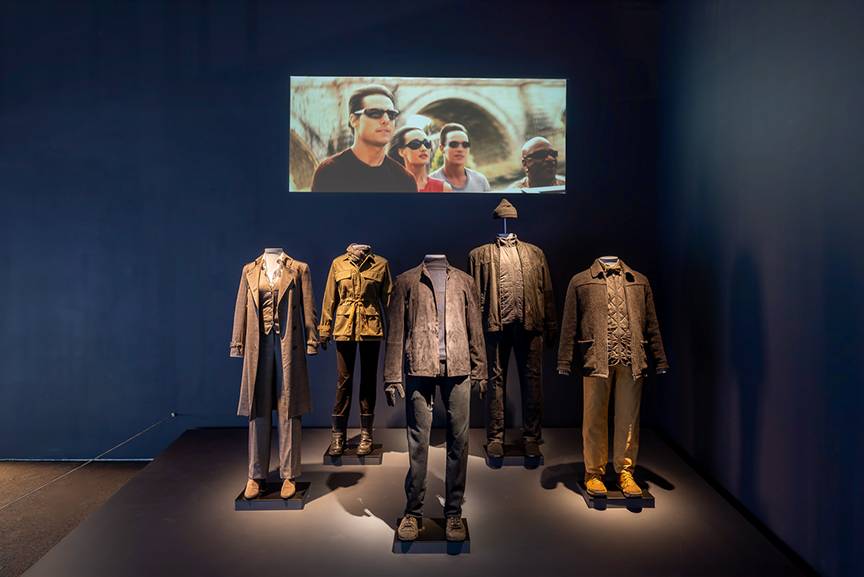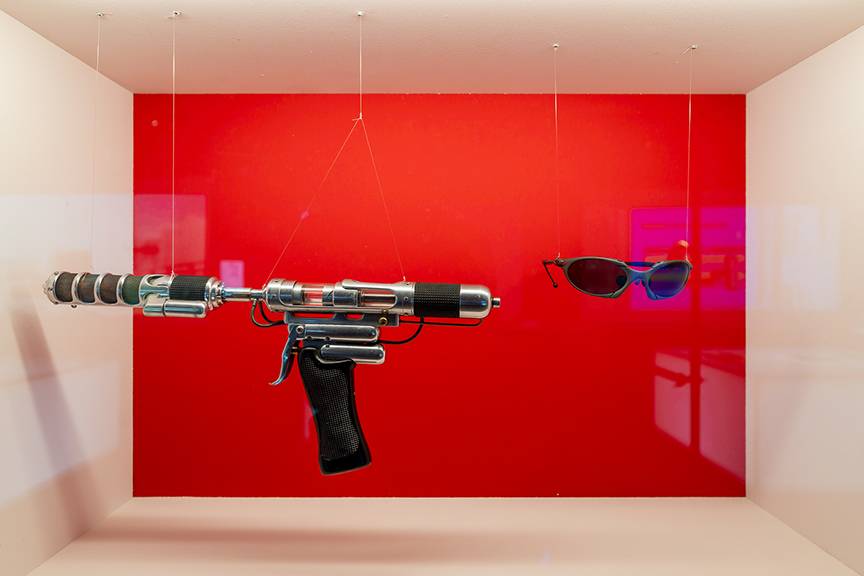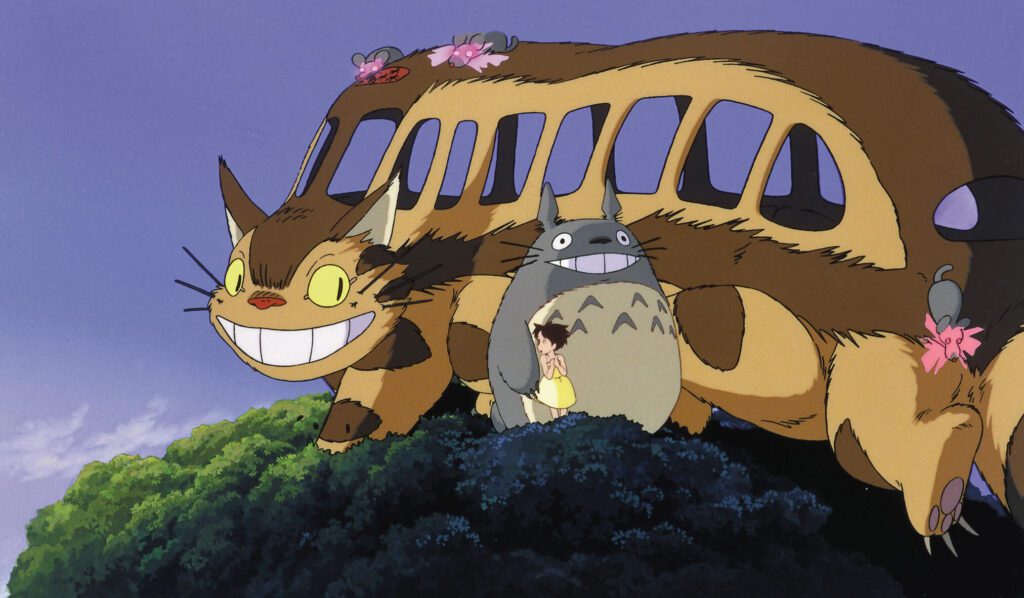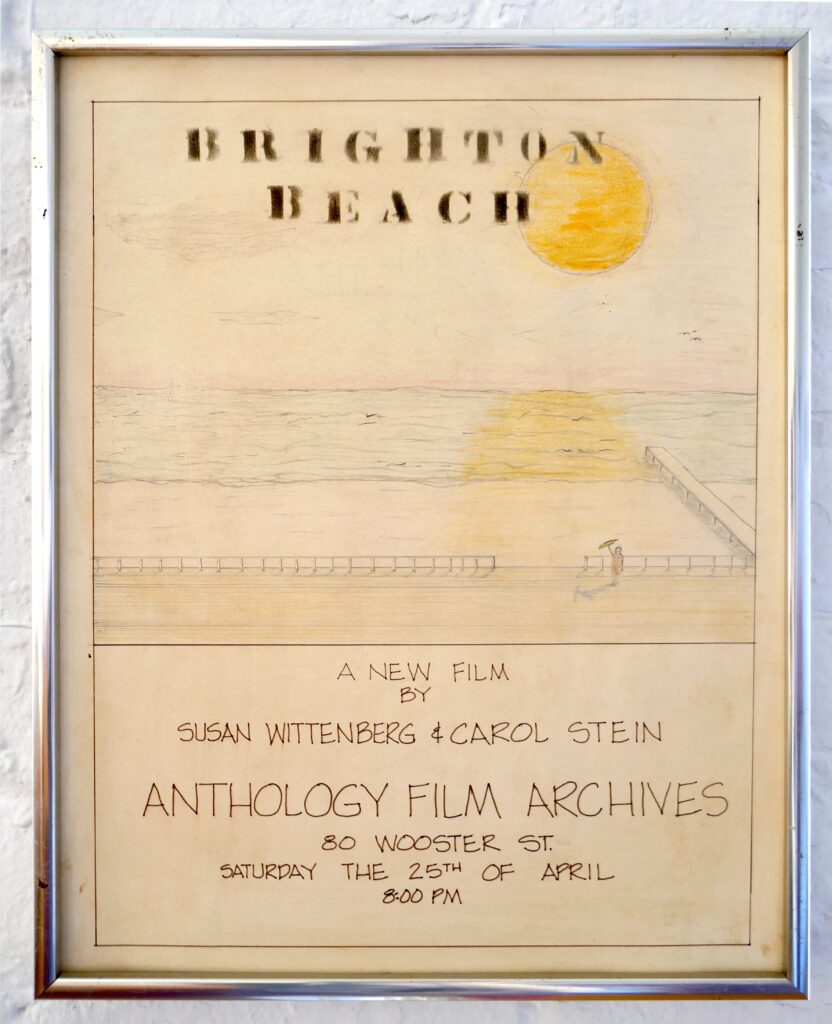Later this month, Mission: Impossible–The Final Reckoning, the eighth entry in the series, hits theaters, and it’s teasing in every way that it will be the last big screen adventure for Ethan Hunt (Tom Cruise) and his venerable team of Impossible Missions Force agents, among them Luther (Ving Rhames) and Benji (Simon Pegg). Or, at least, the last one for its star. But this is Hollywood and M:I is valuable IP, so there is almost certainly a reboot in our future, with or without Cruise. If this is indeed Ethan’s last impossible mission, though, he’s getting a blockbuster send off.
Mission: Impossible–Story and Spectacle, which opened at the Museum of the Moving Image in April, is a celebration of everything that has made Mission: Impossible a multi-billion-dollar, crowd-pleasing behemoth. The stunts, the gadgets, the masks, the insane plots — it’s all here, curated by Barbara Miller, MoMI’s deputy director for curatorial affairs, and exhibited in an appropriately maximalist fashion.

Walking into the exhibit feels like entering a large warehouse set up with staging areas to prep for each mission. The museum’s top-floor gallery space has been stripped down and loaded up with props, ephemera, and screens large and small, with micro-experiences dedicated to each film created from pipes and scaffolding. (The Final Reckoning segment is under cover until the film opens on May 23.)
Suspended above are life-size mannequins recreating signature stunts from each movie and wearing costumes worn by Cruise when he executed the showstopping moments.
Ringing the room are two collections of costumes and cases with film-specific props, like masks and mask-making gear, fake passports, encryption machines, the NOC list disk from the first film, the doodad key central to Dead Reckoning, and assorted tech used by Ethan and his team. Many items came from Paramount Pictures; others are from Cruise’s personal archive. A MoMI-exclusive interview with the star and series producer plays on two TVs at opposite ends of the gallery.
The exhibit is initially overwhelming, with audio and screens and objects all competing for your attention. Do you start with the display of costumes? Or by watching the interview with Cruise? Or do you find the first film and begin there? Once you settle into its pace and rhythm, though, the show reveals its internal logic: it’s your mission, you choose how to accept it. Miller makes the most of the space to give as much room to each of these big films as possible. She leans especially hard on screens to tell the story of a stunt or particular action sequence as a microcosm of the larger picture.
Fans will leave happy (this one did), but there’s a nagging sense of missed opportunity. Mission: Impossible is perhaps Hollywood’s most unlikely franchise, and it has generally avoided deeper consideration of its cultural impact. Why has it been successful? Why do we still care about a 30-year-old series of films based on a TV show from the 1960s? How did it change Hollywood? How did it change Cruise, its star, producer, and champion, whose career has become synonymous with the franchise? There are crumbs and leads to be found, especially in the interview with Cruise, who says that making the movies helped him better understand audience expectations. Generally, though, the exhibit leans hard into the spectacle of its title.
That choice side steps just how unique (and odd) the franchise is. The first film, directed by Brian De Palma, was released in 1996 and is far more cerebral than what the series would become. (It also, in grand De Palma fashion, upended expectation: Jim Phelps (Jon Voight), the leader of the TV series team, is recast as the villain and at the end brutally dispatched, as are all the marquee stars of the film, save Cruise, who die within the first 20 minutes).

More mindless
It was wildly popular and ended on a note clearly setting Ethan up for more adventures. It took four years for Mission: Impossible 2 to materialize, and while it was also a hit the culture had shifted. Tech-noir angst was out, post-millennium malaise was in, and the John Woo-helmed film was more action-focused and mindless, a nonsensical rip-off of Hitchcock’s Notorious that overcorrected for De Palma’s brainy spy thriller.
That could have been it, but Cruise couldn’t walk away. Mission: Impossible III, directed by J.J. Abrams, was released in 2006, and the series pivoted again, this time to something more prototypically episodic, perhaps because its director came from TV or because Cruise could sense the winds in Hollywood shifting. (It also, notably, avoided the kineticism of the Bourne movies aped by seemingly every spy movie of the era.) While the least commercially successful entry, M:I 3 laid the foundation for the larger Bond-like agent-versus-terrorist syndicate narrative that would unfold in the next five installments: the Brad Bird-directed Ghost Protocol (2011), followed by Rogue Nation (2015), Fallout (2018), Dead Reckoning (2023), and Final Reckoning (2025), all directed by Christopher McQuarrie.
In McQ, as Cruise calls him, the star found the perfect collaborator for the franchise, and, indeed, Rogue Nation and Fallout are the most rip-roaring fun of the bunch. What are they about? Spy stuff, existential global threats — the usual. Really, though, they’re stunts with movies grafted on to them.
What Cruise puts himself through for this series is madness — and we love him for it. Climbing the Burj Khalifa in Ghost Protocol, hanging on to a plane as it takes off in Rogue Nation, the 25,000-foot HALO jump in Fallout are pure, immaculate entertainment and worth paying to see on the biggest screen possible. (Watching Ghost Protocol in IMAX is one of the best moviegoing experiences of my life.)
These stunts have always been part of the franchise, beginning with the silent secure-room heist in the first film. It was a breathless moment in a thrilling movie, and it was a showstopper. But it wasn’t the show. Three decades later, that dynamic has been inverted. It’s so difficult to separate the stunt from the film that MoMI’s exhibit frames its exploration of each around the stunts. It makes physical what has mostly gone unsaid: the stunt is the film.

This might explain the franchise’s endurance. As Hollywood moves farther and farther away from the tactile, Cruise in equal and opposite measure is more and more committed to the physical. Cruise cares, a lot, and we can tell. And in almost single-mindedly tending to the franchise, he bent M:I’s trajectory — from one-off films to an interlocking, multi-movie arc — to mirror the six big-screen Kirk-led Star
Trek adventures, the only other series I can think of that has achieved the same longevity and output while maintaining the same core cast. That is no small feat.
But if Cruise has been M:I’s biggest asset, he might also be its greatest impediment. Dead Reckoning was a commercial and critical disappointment, the second-worst performer in the series. It has a fine stunt — Cruise jumping a motorcycle off a mountain and parachuting to the ground — but the story was nonsense, even by M:I standards, with a wholly disposable villain. When Final Reckoning is released,
Cruise will be approaching 63, six years older than Voight, playing a less-than-nimble old man, in the first film. That’s some rough math. Yet Cruise has earned the right to ask his IMF team — and the audience — to trust him “one last time,” as he does in the Final Reckoning trailer.

M:I: should never have endured as a franchise. Hollywood in 1996 was not as primed for the kind of endless, TV-like narratives that the industry is irredeemably hooked on in 2025. And yet here we are, three decades later, considering the end of a venerable, generations-spanning, career-defining, industry-shaping franchise. If it’s about to go into hibernation, there could be no better send off than Mission: Impossible—Story and Spectacle. It’s an exhibit that is, like its subject, crowd pleasing and impossibly spectacular.
Mission: Impossible–Story and Spectacle is on view at the Museum of the Moving Image, 36-01 35 Ave. in Astoria, through December 14. Visit movingimage.org for more information.







